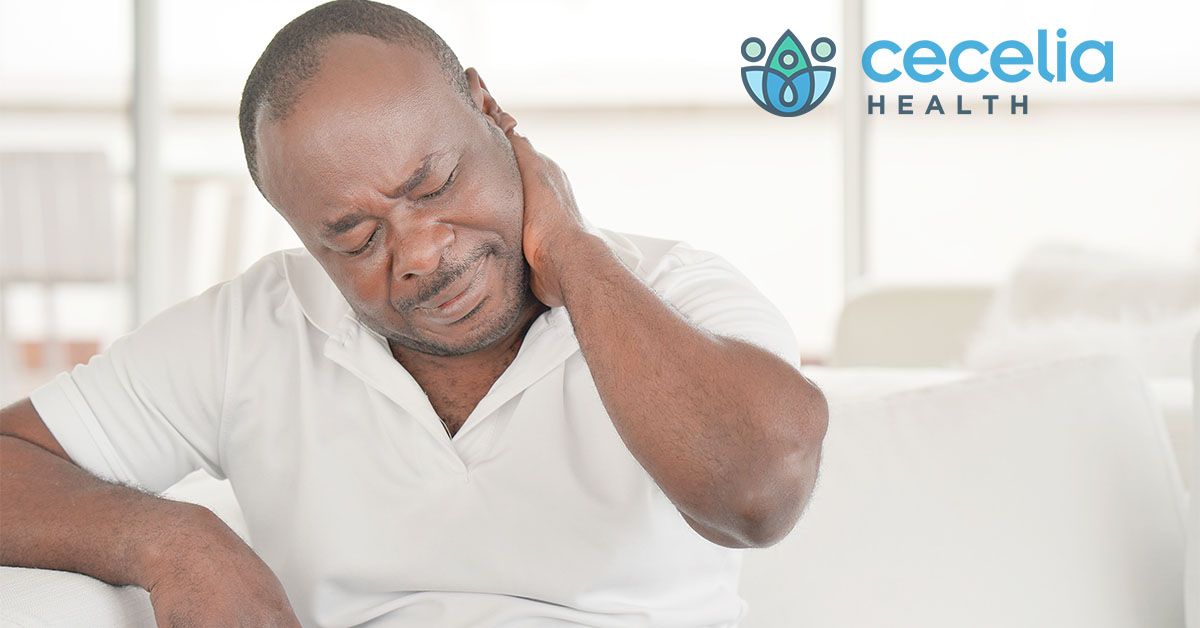Chronic pain is one of the most costly health problems in the U.S. The National Center for Complementary and Integrative Health (NIH) estimates that approximately 25.3 million U.S. adults (11.2%) had pain every day for the previous 3 months. Nearly 40 million adults (17.6%) had severe pain. The NIH also indicates that individuals with severe pain have worse health outcomes, “used more health care, and had more disability than those with less severe pain.”
Chronic pain can be constant, or it may come and go. It can also happen to any part of the body. It can interfere with daily activities, such as work, sports, exercise, social engagements, as well caring for yourself or others. Experiencing chronic pain is linked to depression, anxiety and trouble sleeping, which in turn, can make pain worse and this cycle can be difficult to break. Read further for tips to best manage chronic pain.
Types of Pain
Pain originates in nerve cells beneath the skin and in organs throughout the body. If you have pain, these receptor cells send messages to the brain. Pain can range from slightly bothersome, such as a mild headache, to something extreme and emergent, such as the pain from a broken bone or appendicitis.
Pain is typically classified into 3 areas:
- acute- which is immediate and very short term,
- subacute-which lasts for a few weeks or months, or
- chronic- which lasts for more than 3 months.
Pain medicine acts to reduce or block receptor messages to the brain before they reach the brain and acts to reduce or block pain sensations. Though certain pain medications are not always successful on their own to help with chronic pain.
What does chronic pain feel like?
People with chronic pain describe their pain in many different ways, such as:
- Aching
- Burning
- Shooting
- Squeezing
- Stiffness
- Stinging
- Throbbing
How can you treat chronic pain?
By working with your healthcare provider you can first try to identify and treat the root cause and source of the pain. If that is not feasible or possible, doctors will still treat the issue with pain management. The course of treatment depends on the type of pain, in addition to many other factors such as:
- Age
- Overall health
- Lifestyle
The best treatment plans often use a variety of strategies, including medications, lifestyle changes and therapies.
Can medications be used to help treat chronic pain?
Your healthcare provider may recommend certain medications to relieve chronic pain. The Mayo Clinic summarizes some of the popular types of medications that may be used to help manage chronic pain:
- Anticonvulsants (medications that prevent seizures) for nerve pain
- Antidepressants
- Corticosteroid
- Muscle relaxers
- Nonsteroidal anti-inflammatory drugs (NSAIDs) or acetaminophen
- Topical products (applied to the skin) that contain pain relievers or ingredients that create soothing heat or cold
- Opioids (narcotics)
- Sedatives to help with anxiety or insomnia
- Medical marijuana
Lifestyle Choices and Chronic Pain
Lifestyle can greatly impact chronic pain and help to minimize it. Examples of lifestyle factors to consider when working to decrease chronic pain include:
- Stress – this can play a major role in chronic pain, it is therefore very important to try to reduce daily stress as much as possible. Techniques that have proven helpful include yoga, meditation, mindfulness and deep breathing. Try different options to find what works best.
- Exercise – activity, especially lower intensity options such as walking or light swimming for 30 minutes every day, can reduce pain. Exercise may also help to reduce stress.
- Nutrition – it is very important to eat a healthy and balanced diet to boost overall health. Your healthcare provider may also suggest an anti-inflammatory diet by eliminating foods that can cause inflammation and worsen pain.
- Sleep – sufficient rest and quality sleep are also key for overall health. A lack of sleep can cause weight gain and promote inflammation which may contribute to worsening chronic pain. Quality sleep is also important for stress management.
- Therapy – if the above options alone do not help, counseling can assist you in shifting your perspective about pain and pain management, in addition to teaching healthy ways to cope and live with it. The primary objective of therapy is to teach that you can do something on your own to control pain. This includes changing attitudes, the perception of being a victim, feelings, or behaviors associated with pain, or understanding how unconscious forces and past events have contributed to pain.
Be sure to discuss these lifestyle choices with your healthcare provider to determine how each applies to your type of chronic pain and how you can incorporate changes into your life.
Alternative treatments
There are also alternative courses of treatment that may help with chronic pain. Always consult with your doctor before trying alternative treatment options to make sure it is safe and appropriate for your condition and circumstances. Alternative options include:
- Acupuncture
- Aromatherapy
- Biofeedback
- Hypnotherapy, or hypnosis
- Mindfulness training
- Music, art or pet therapy
- Reiki or Healing Touch
The future with chronic pain
While many people with chronic pain are unable to determine the source cause, a combination of medication, therapies and lifestyle changes help you significantly reduce pain and create a healthy environment for managing the pain, ultimately resulting in great success.
